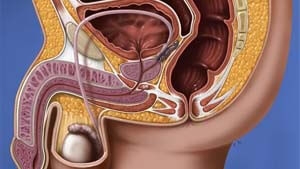Inflammation of the bladder in men develops very rarely due to the specific structure of the urethra – a narrow, long, curved urethra traps infectious agents, preventing them from entering the & nbsp; bladder. Cystitis is more prone to men of mature age.
What kind of cystitis can men have?
In most cases, the development of cystitis in men is due to infravesical obstruction – squeezing the urinary tract under the bladder, which interferes with the free flow of urine.
Acute cystitis can be triggered by medicinal, chemical, toxic, thermal and alimentary factors, as well as specific and non-specific infectious agents. Read more about the clinical manifestations of a cyst on estet-portal.com. According to the prevalence, focal, cervical and diffuse cystitis are distinguished.
Based on morphological changes, cystitis in men can be:
- catarrhal,
- ulcerative;
- granulation;
- gangrenous;
- phlegmonous;
- necrotic;
- hemorrhagic;
- polypous;
- fibrinous;
- cystic;
- interstitial.
Causes and mechanism of development of cystitis in men
Urological pathologies, which are accompanied by obstruction and stasis of urine, are the main cause of cystitis in men. Foreign bodies, tumors, urethral stricture, diverticula, prostate adenoma and bladder stones can create a mechanical obstruction to the outflow of urine. That is why cystitis in men occurs in adulthood, when there are similar urological problems. In boys, cystitis often accompanies phimosis and nephrogenic bladder dysfunction.
Against the background of such infectious diseases as urethritis, vesiculitis, orchitis, prostatitis, epididymitis, infectious cystitis develops in men. The causative agents of cystitis are often Escherichia coli, Proteus, Pseudomonas aeruginosa and yeast-like fungi. Specific cystitis is provoked by trichomonads, mycobacteria, mycoplasmas, chlamydia and gonococci.
 The descending mechanism of cystitis development occurs in kidney tuberculosis, pyonephrosis and pyelonephritis. Possible hematogenous infection from chronic foci of inflammation (pulpitis, sinusitis, tonsillitis). Bladder catheterization or cystoscopy may lead to direct infection.
The descending mechanism of cystitis development occurs in kidney tuberculosis, pyonephrosis and pyelonephritis. Possible hematogenous infection from chronic foci of inflammation (pulpitis, sinusitis, tonsillitis). Bladder catheterization or cystoscopy may lead to direct infection.
What are the symptoms cystitis in men?
Men complain of frequent urination during the day and at night, pain and difficulty in urination, imperative urge.
Urine is turbid, blood is visualized at the end of urination. At the beginning of urination, there is a burning sensation and pain in the urethra. Outside the act of urination, the patient feels a pulling pain in the suprapubic region, penis, groin and scrotum. The volume of urine during a single urination is reduced to 10 ml, urinary incontinence may develop.
General weakness and fever appear as a sign of an inflammatory process. Such symptoms reduce the ability to work, worsen the quality of life, making normal work impossible and making it difficult to have sexual relations. For methods of diagnosing and treating cystitis in men, read our next article.









Add a comment